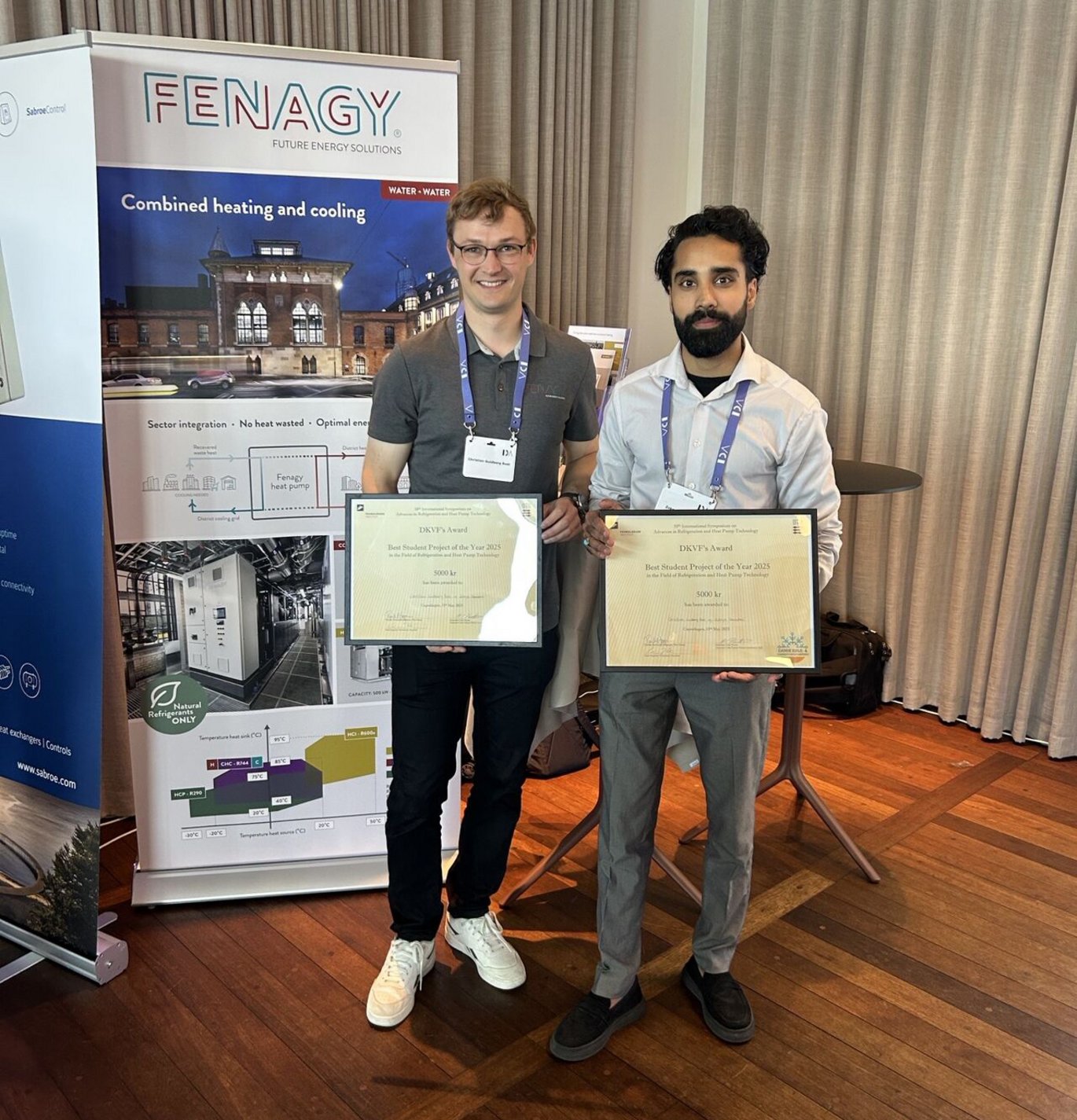Next level heat pump: MSc students behind award-winning solution for heating and cooling
Two mechanical engineering students from Aarhus University have analysed a new type of heat pump capable of delivering both heating and cooling—simultaneously. Their project earned the Best Thesis Award at this year’s Danish Refrigeration and Heat Pump Forum 2025.

Heating in winter and cooling in summer. It sounds simple, but in real-world commercial buildings, this typically requires two separate systems: a heat pump and a chiller. This challenges both costs and carbon emissions.
In their thesis project, recent graduates Christian Guldberg Rost and Zakrya Sharafmal have demonstrated how an advanced CO₂-based heat pump developed by Fenagy A/S can serve as a combined solution for buildings with simultaneous heating and cooling demands - even when these demands are not in balance.
"What’s unique about the system is not just that it can heat and cool, which most heat pumps can do. The real innovation is that it can do so when the building's heating and cooling needs are mismatched, and still deliver what is required," says Christian Guldberg Rost, now a development engineer at Fenagy.
Software extension and realistic business case
The students did not design the heat pump themselves, but were given access to use it and work with test data from the Danish Technological Institute. They extended Fenagy’s calculation software to handle this new type of system and validated their simulation model using real-world measurements from the test setup.
"We simulated the system's operation over a full year using real weather data and electricity spot prices. Based on that, we developed realistic business cases showing how performance could be optimised - for example, by using thermal storage," Zakrya Sharafmal explains.
The analysis revealed that, despite higher up-front investment, the system becomes cost-effective over time thanks to its high efficiency. In warmer climates such as Southern Europe, the business case is even stronger due to the high cooling demand.
Four modes - one integrated solution
The heat pump can operate in four modes: as a pure air-to-water heat pump, a pure chiller, and in two combined modes where either the heating or cooling capacity defines system operation. A key component - the air/CO₂ heat exchanger - acts alternately as a gas cooler or energy absorber depending on the demand scenario.
This flexibility allows the system to meet varying and asynchronous heating and cooling needs - an increasingly common challenge in modern office buildings.
Technology with a conscience
The study also addressed sustainability beyond economics and engineering. The students examined refrigerant choices, showing how CO₂ can compete with cheaper synthetic refrigerants that often contain PFAS.
"Yes, you can make it cheaper, but is that the right path for the green transition? We think regulators should set higher standards, because our project shows that better solutions are possible," says Christian Guldberg Rost.
Associate Professor Pourya Forooghi, who supervised the thesis, praises the students’ contribution:
"They extended software and developed a detailed simulation model for an advanced heat pump concept, demonstrating its advantages in both economic and environmental terms. It’s an excellent example of applied research with real-world impact."
Christian Guldberg Rost now works at Fenagy, continuing development on the technology. Zakrya Sharafmal has joined Lowenco, a company specialising in cooling solutions for the pharmaceutical industry.
Contact
Jesper Bruun
Journalist
Mail: bruun@au.dk
Tel.: 42404140
